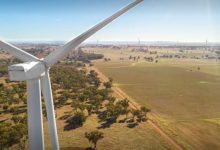The Clean Energy Regulator has dramatically increased its estimates of large-scale wind and solar projects that have been completed, are being built or have been “firmly announced”, saying they now exceed 10GW.
- Its latest assessment of the large-scale renewable energy market – done in its capacity as regulator of the renewable energy target – finds that since 2016, some 10,066MW (10.1GW) of new large-scale capacity has been firmly announced, exceeding the 6400MW required to meet the reduced 2020 target of 33,000GWh.
- Of this capacity, the CER says, some, 8,332MW is either already built or under construction.
- “New renewable energy power station accreditations are accelerating faster than anticipated,” the regulator notes in its report. “We now anticipate over 3400MW of new capacity to be accredited during this year and up to 4300MW in 2019. This is considerably higher than our May 2018 estimate.”
- In 2018 to date, it says 2278MW of new capacity has been accredited and 1307MW is currently under application. “We expect at least another 200 megawatts to apply for accreditation this year.”
- The CER’s assessment came as another three large solar farms – the biggest to date in their respective states of NSW, Victoria and South Australia – joined the grid in the last week, and as private analysts predicted the amount of solar capacity (both large scale and rooftop), would double to 18GW by the end of 2020.
- The CER is not the only observer to be taken aback by the sheer scale of investment. That is now being reflected in spot prices for LGCs (large scale generation certificates), which closed at $71.90 on September 27, its lowest price levels since October 2015.
- The price for LGCs has traded way above expectations in recent years because of the shortfall in certificates, blamed on the lack of investment in wind and solar farms over three years as the Abbott government tried to kill the policy, and then succeeded only in reducing it.
- While most wind and solar farms are now built under contracts that attribute zero value to those LGCs, the spot price (which represents a tiny fraction of the market) has surged because some retailers did not have enough and had to bid high for scarce certificates.
- However, the CER now expects the market to go into surplus after February 2019, with its latest estimate pointing to a surplus of more than 5 million certificates. This explains why the futures price for LGCs beyond 2020 has fallen to below $20/MWh, with some analysts expecting them to fall to near zero depending on the scale of new investment and their completion dates.










